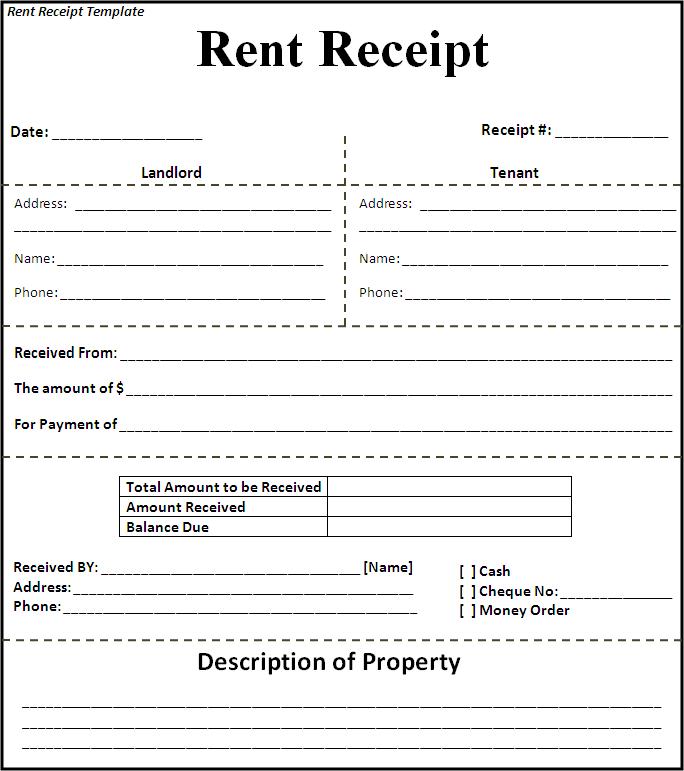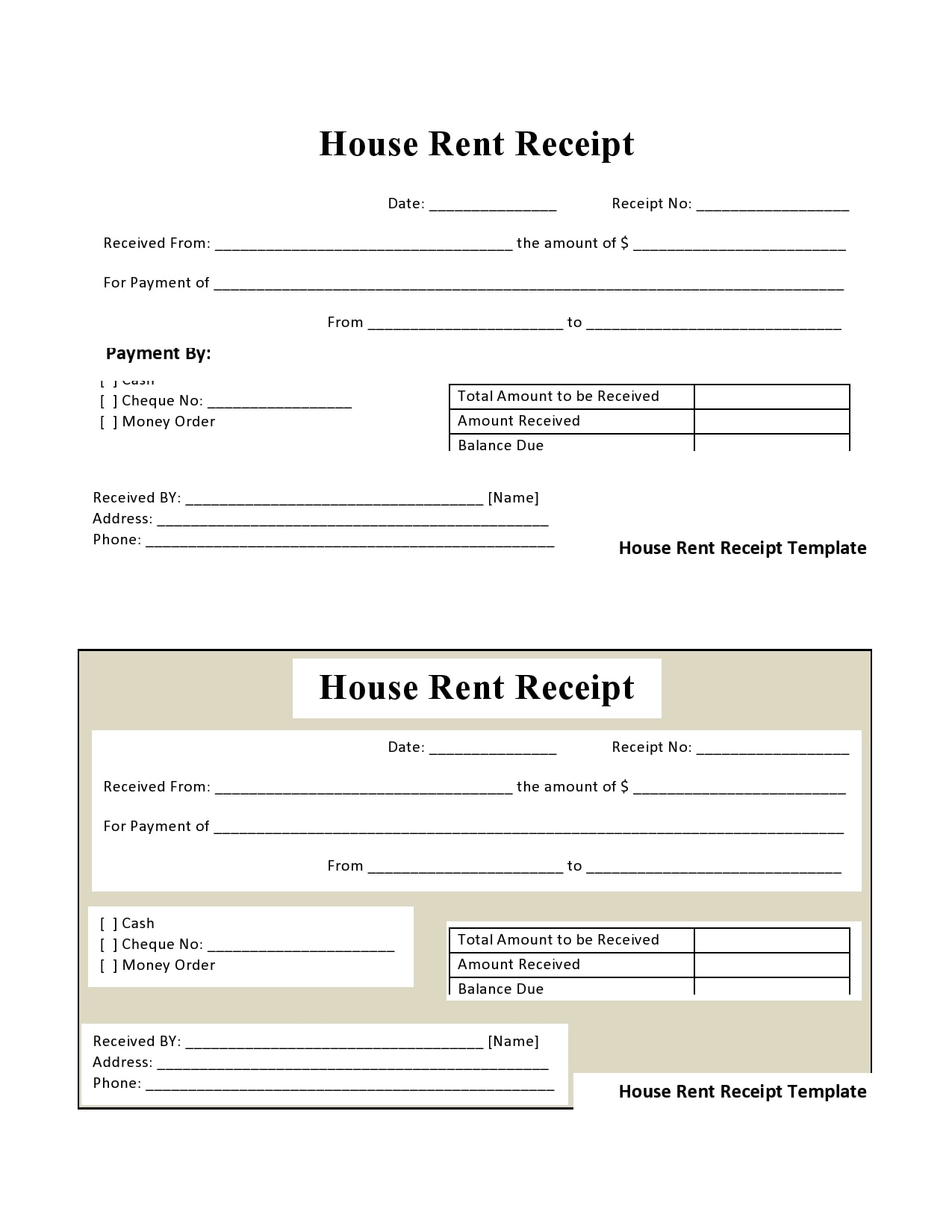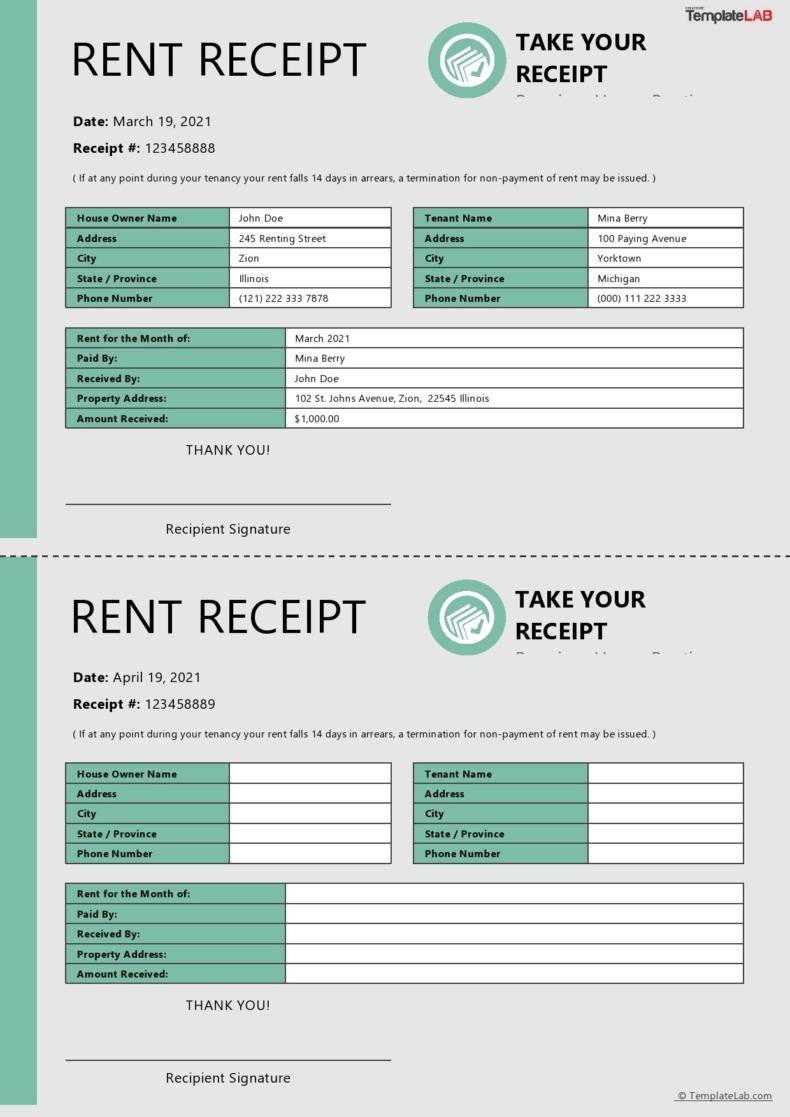As we all know, managing our finances can be quite challenging, especially when it comes to keeping track of rent payments. It is essential to have a proper system in place to ensure that both tenants and landlords are on the same page. One such useful tool is a rent receipt.
What is a Rent Receipt?
 A rent receipt is a document that serves as proof of payment made by a tenant to their landlord. It includes important information, such as the amount paid, the date of payment, the property address, and the names of the tenant and the landlord. Rent receipts are crucial for both parties as they provide a record of financial transactions and can be used for legal and tax purposes.
A rent receipt is a document that serves as proof of payment made by a tenant to their landlord. It includes important information, such as the amount paid, the date of payment, the property address, and the names of the tenant and the landlord. Rent receipts are crucial for both parties as they provide a record of financial transactions and can be used for legal and tax purposes.
The Importance of Rent Receipts
 Rent receipts play a vital role in the rental process for several reasons. First and foremost, they ensure transparency and help maintain a healthy landlord-tenant relationship. By providing a written record of payments, both parties have clear documentation of financial obligations and can refer back to it if any disputes arise in the future.
Rent receipts play a vital role in the rental process for several reasons. First and foremost, they ensure transparency and help maintain a healthy landlord-tenant relationship. By providing a written record of payments, both parties have clear documentation of financial obligations and can refer back to it if any disputes arise in the future.
Furthermore, rent receipts are essential for tax purposes. Landlords need to maintain accurate financial records, and tenants may need proof of payment when filing their tax returns. Rent receipts provide the necessary evidence to support these claims.
Types of Rent Receipts
 Rent receipts come in various forms and formats. Some landlords prefer using pre-designed templates, while others create their own. Commonly used rent receipts include:
Rent receipts come in various forms and formats. Some landlords prefer using pre-designed templates, while others create their own. Commonly used rent receipts include:
- Simple Rent Receipts: These receipts typically contain basic information, such as the tenant’s name, payment amount, date, and property address.
- Detailed Rent Receipts: These receipts provide a more comprehensive record, including additional details like the landlord’s contact information, late payment fees, and the duration of the rental agreement.
- Electronic Receipts: In today’s digital era, many landlords and tenants prefer using electronic rent receipts. These can be generated and sent via email, making the process more convenient and efficient.
How to Create a Rent Receipt
 Creating a rent receipt is relatively simple. You can use various online resources that offer free templates or create your own customized receipt. Here are the key elements that should be included:
Creating a rent receipt is relatively simple. You can use various online resources that offer free templates or create your own customized receipt. Here are the key elements that should be included:
- Header: Start by writing “Rent Receipt” or a similar title at the top of the document to make it clear what it is.
- Properties: Include the property address, landlord’s name, and tenant’s name.
- Date: Indicate the date when the payment was made.
- Payment Details: Specify the amount paid, the payment method, and any additional fees, such as late payment charges or utility bills.
- Signatures: Leave space for both the landlord and the tenant to sign the receipt, indicating their agreement on the payment made.
Final Thoughts
 Rent receipts are an essential tool for both tenants and landlords. They provide a clear record of payments made and foster transparency in the landlord-tenant relationship. Whether you use pre-designed templates or create your own, make sure to include all the necessary details to ensure the rent receipt is valid and serves its purpose.
Rent receipts are an essential tool for both tenants and landlords. They provide a clear record of payments made and foster transparency in the landlord-tenant relationship. Whether you use pre-designed templates or create your own, make sure to include all the necessary details to ensure the rent receipt is valid and serves its purpose.
By using rent receipts, both parties can maintain accurate financial records, avoid conflicts, and easily track rent payments. Whether you are a tenant or a landlord, incorporating rent receipts into your rental process is a wise decision.
Remember, communication and documentation are key for a smooth rental experience, and rent receipts are an excellent way to achieve this. So start using them today, and enjoy the benefits they bring!